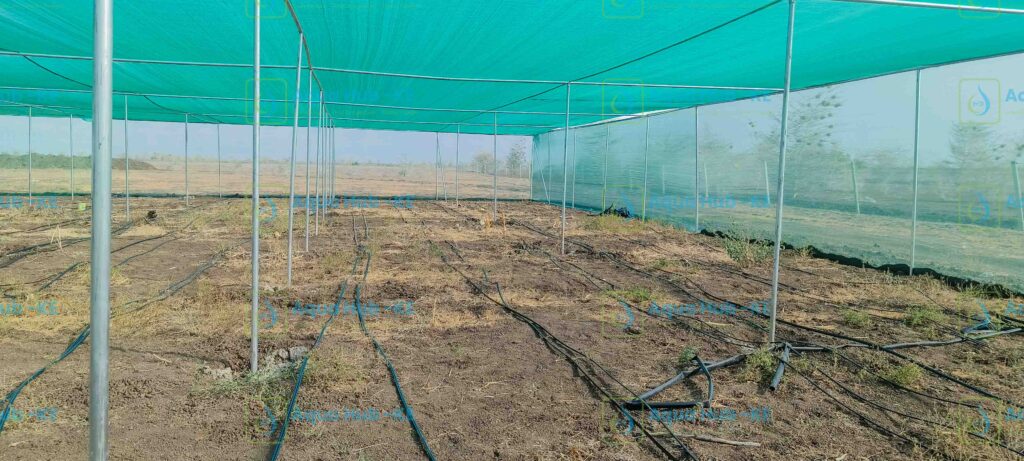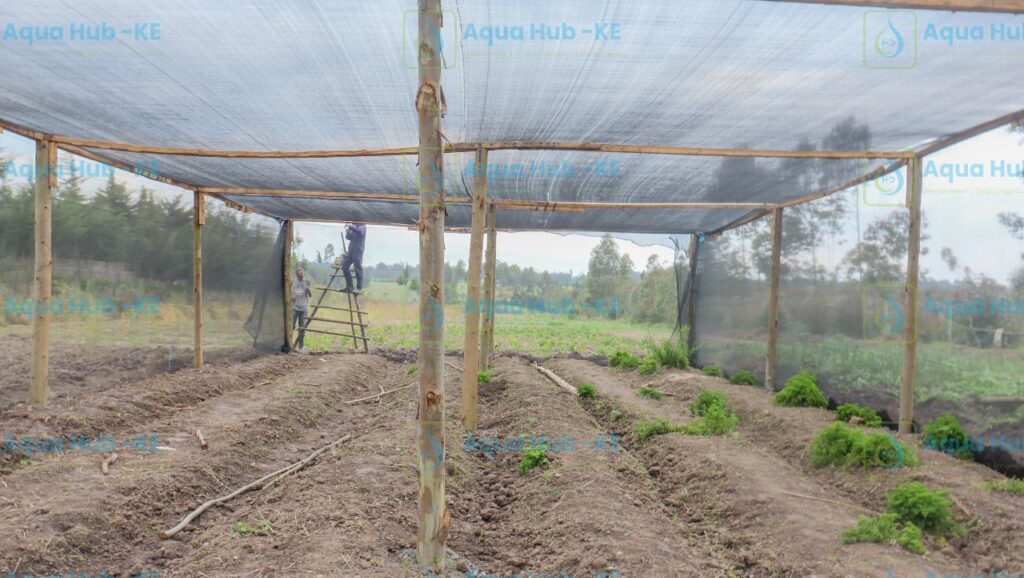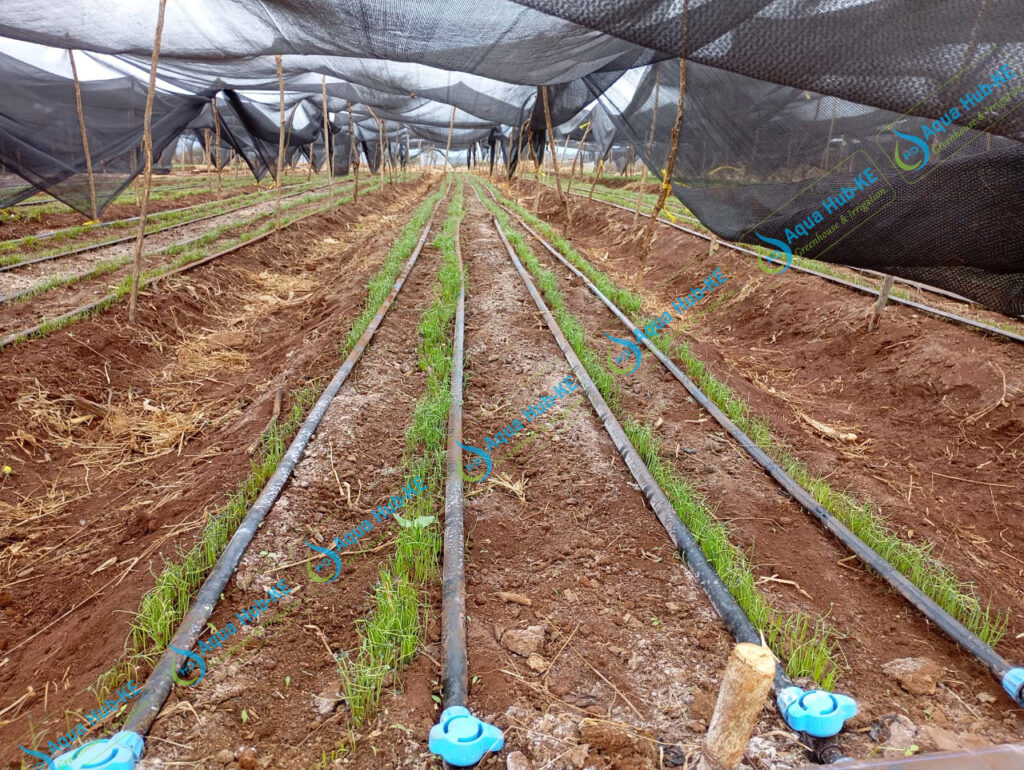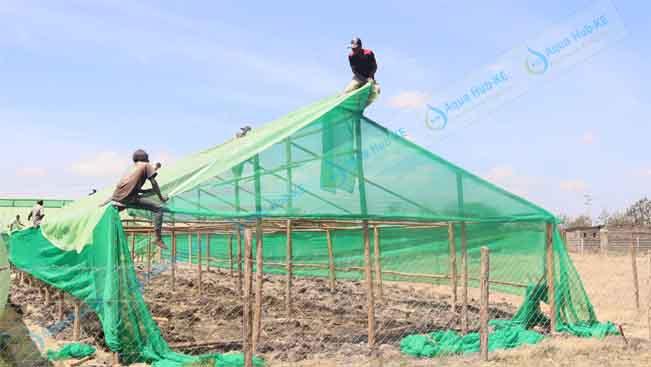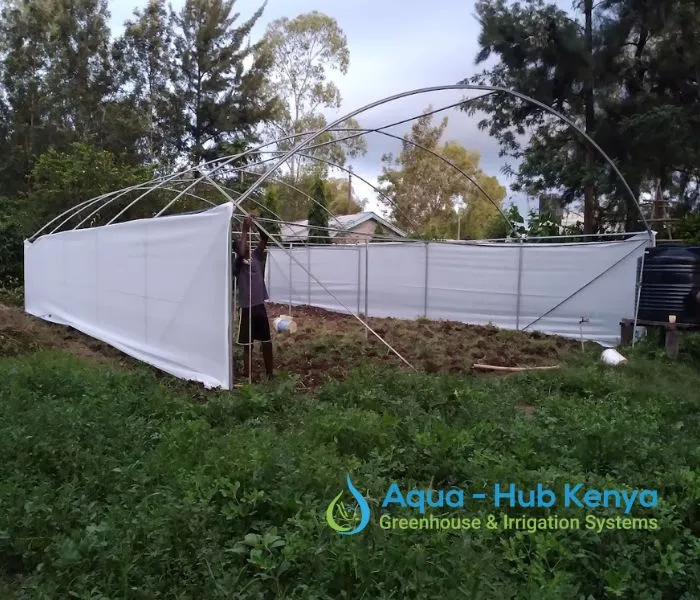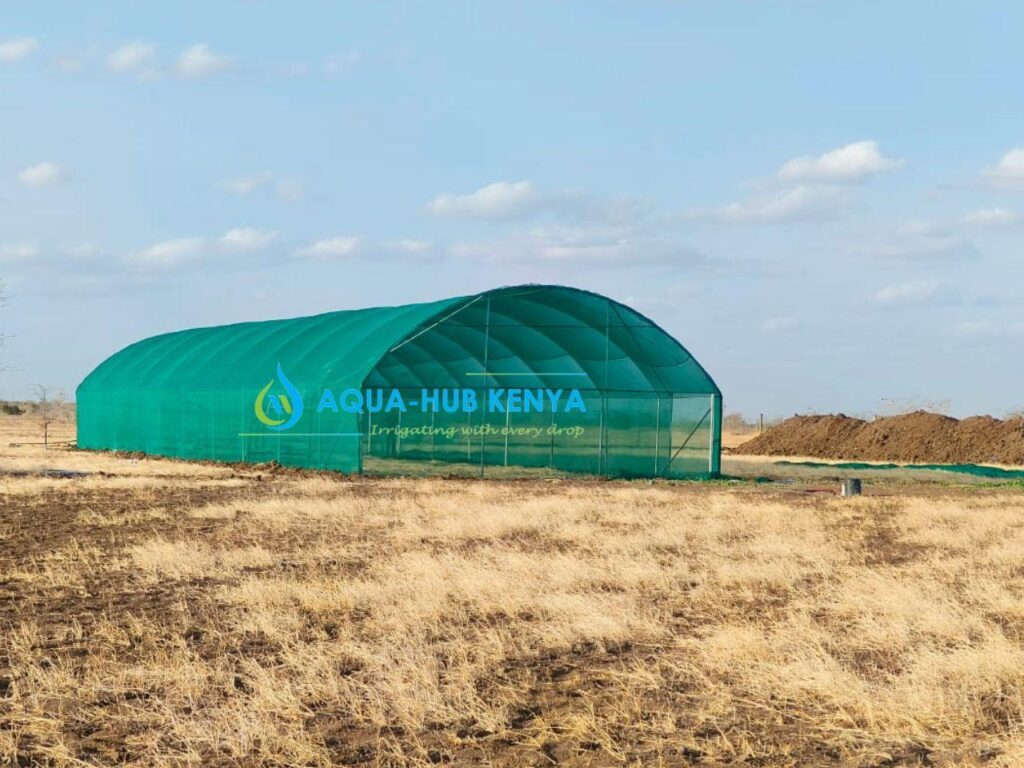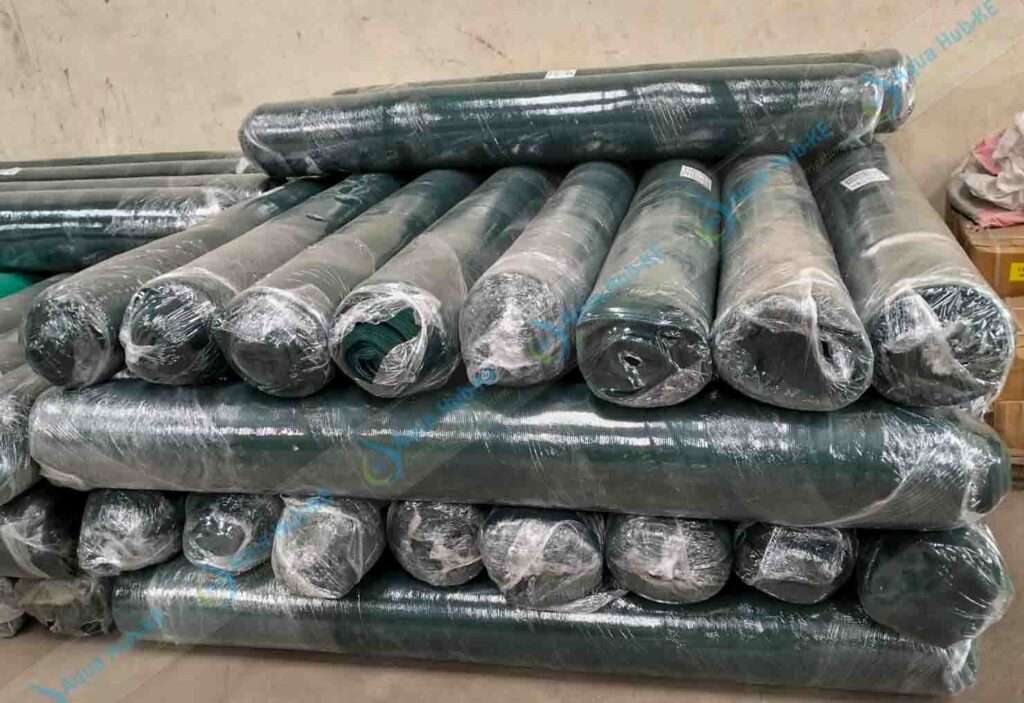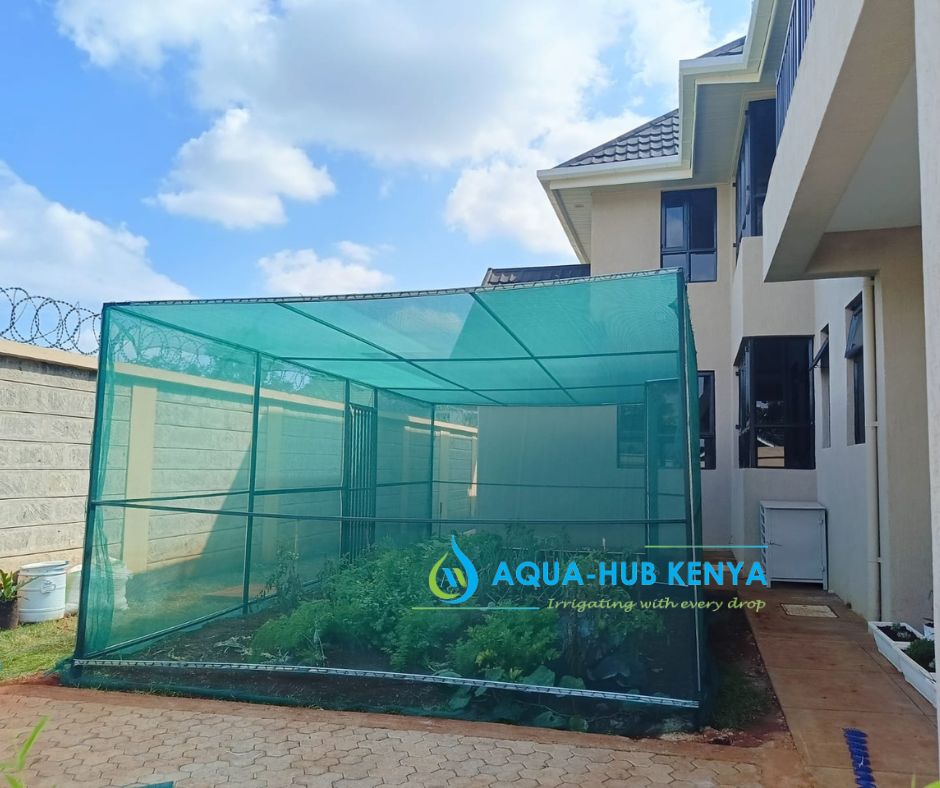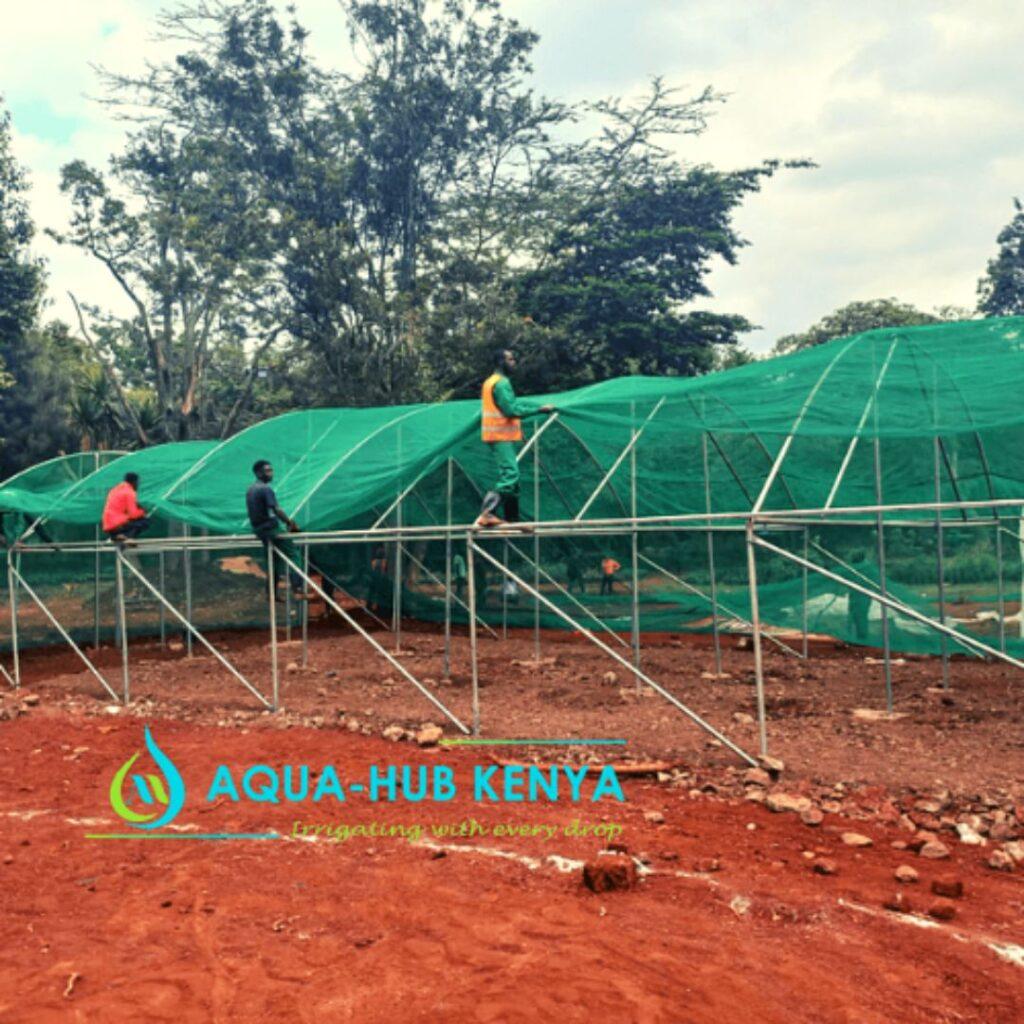Blog
Shade House Farming in Kenya 2025
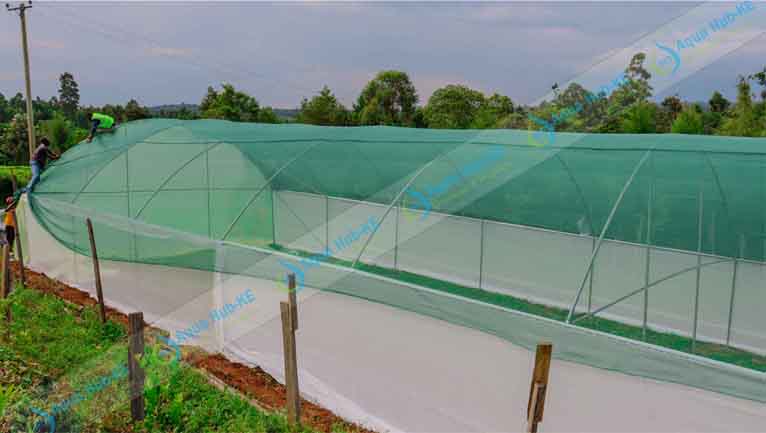
Open field farming faces harsh climate conditions especially drought and harsh radiation thus threatening food security and stability. Shade house farming enhances sustainable farming by protecting crops from damage by radiation, high humidity and winds.
This blog explores the benefits, costs, suppliers and considerations for implementation of shade house farming in Kenya.
Why Implement Shade House Farming?
For decades, farmers in Kenya have relied on interchanging patterns of long and short rains to cultivate crops. However, due to climate change, we are now experiencing high temperatures, water shortage, low rainfall and rampant pest and diseases. Delicate crops such as leafy greens and young seedlings wilt and die because of water stress. Heavy rainfall causes fungal infections and widespread pest activity thus affecting yield.
Shade House farming is the climate-smart solution that mitigates these risks because of its controlled environment.
What is a Shade House?
Often confused with greenhouses, a shade house is a semi-open agricultural structure designed primarily to protect plants from excessive sunlight, heat, and other harsh environmental elements. Unlike fully enclosed greenhouses which aim to trap heat and create a warmer, often humid environment for specific crops, a shade house focuses on reducing heat and diffusing light while allowing for natural airflow.
Description of Shade Houses
The basic structure typically consists of a sturdy frame, either of treated timber or galvanized steel, and a special shade net cover. These nets are woven or knitted fabrics made from durable, UV-stabilized materials, usually high-density polyethylene (HDPE). They come in various densities, expressed as a “shading percentage,” commonly ranging from 30% to 90%. This percentage indicates how much sunlight the net blocks. For instance, a 55% shade net allows 45% of sunlight to pass through.
The Suitability of shade nets lies in their ability to:
- Diffuse sunlight: Preventing direct, scorching rays from hitting plants.
- Lower internal temperature: Reducing temperatures by 5-10°C compared to outside conditions, creating a cooler microclimate.
- Retain humidity: Trapping moisture around the plants, which reduces the need for frequent watering.
Common colors for shade nets in Kenya are green and black. Green nets blend naturally with the environment and absorb less heat, making them ideal for heat-sensitive plants. Black nets offer effective protection by blocking a higher percentage of sunlight and are generally for plants that require more significant shade.
Benefits of Shade Houses in Kenya
- Increase in Crop Yields: By optimizing temperature, shade houses create an environment where plants can grow efficiently and yield more. Research shows that shade nets improve crop quality and yield by a remarkable 20-40%. For instance, a 50% shade net has been shown to significantly increase yield for crops like green grams and maize in Arid and Semi-Arid areas.
- Exceptional Water Conservation: By diffusing direct sunlight, they drastically reduce the rate of evaporation from the soil surface and plant leaves. Pairing shade nets with efficient irrigation systems like drip kits further magnifies this benefit, ensuring water reaches the plant roots directly with minimal loss.
- Pest and Disease Control: While not fully enclosed like some greenhouses, shade nets act as a barrier against pests like thrips, and mites, and birds that can cause crop damage. This promotes healthier crops, safer produce, and more eco-friendly farming practices.
- Optimal Temperature Regulation and Year-Round Production: By maintaining a more stable and cooler microclimate, shade houses enable farmers to grow high-value crops like strawberries, tomatoes, and various leafy greens year-round. This consistent production ensures a steady supply to the market, leading to greater economic stability for farmers.
- Enhanced Crop Quality: Direct, intense sunlight can lead to issues like sunburn, leaf scorch, and uneven ripening. Shade houses prevent these problems, resulting in produce that is not only healthier but also visually more appealing. This improved quality fetches better prices in the market and reduces post-harvest losses due to sun damage.
- Protection from Adverse Weather: Beyond sun and heat, shade nets offer a degree of protection against other adverse weather conditions such as strong winds, heavy rainfall, and even hailstorms, which damage delicate plants.
What to Grow in a Shade House
- Leafy Greens: Lettuce, spinach, kales and arugula are excellent choices. They thrive in the cooler, diffused light and higher humidity provided by shade houses, preventing bolting and leaf burn.
- Vegetables: Tomatoes, cabbages, and capsicum do well in enclosed structures with controlled temperature. For tomatoes, a 55% shade net is ideal, allowing enough light for fruiting while mitigating heat stress.
- Fruits: High-value fruits like strawberries and passion fruits can be grown successfully, benefiting from consistent conditions and protection from pests.
- Flowers: Ornamental flowers such as roses, orchids, and carnations, which often require specific light and temperature conditions for vibrant blooms, find an ideal home in shade houses.
- Herbs: Parsley, cilantro, basil, and mint, known for their delicate nature and preference for cooler, humid environments, flourish under shade nets, ensuring year-round supply for the culinary and medicinal markets.
- Seedlings and Nurseries: Shade houses are indispensable for raising healthy tree seedlings and vegetable nurseries. The protected environment shields young plants from harsh sun and drying winds, allowing them to develop strong roots before transplanting.
- Herbs: Ferns, palms, and bromeliads, which naturally thrive in the filtered light and humidity of tropical forests, find an ideal mimicry of their natural habitat within a shade house.
Cost of Shade House Farming in Kenya
Shade net prices in Kenya generally range from KES 80 to KES 200 per square meter. A 4×50 meter roll cost between KES 14,000 and KES 39,000 depending on the shade percentage.
Choosing the Right Shade Net
Selecting the appropriate shade percentage is critical and depends entirely on the crops to grow and the local climatic conditions. Too much shade can hinder photosynthesis, while too little defeats the purpose.
Expert consultation from Aqua Hub Kenya is ideal to ensure you get a reliable net and proper installation.
Installation of Shade Nets for Agriculture
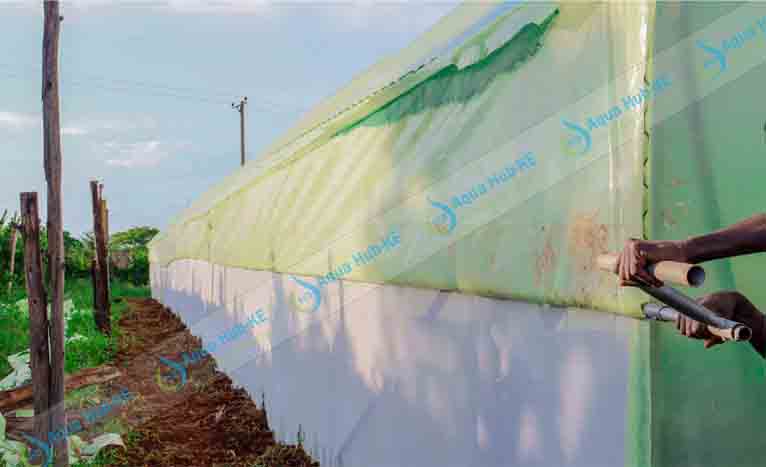
Proper installation of shade nets should be done to ensure durable and sustainable farming. Consult Aqua Hub LTD for support and installation of shade houses. We are trusted, reliable and customer’s best choice.
Call 0790719020
Proper Maintenance of Shade Houses
To ensure longevity and effectiveness, shade nets require regular inspection for any signs of damage, wear, or degradation due to environmental factors.
Prompt repair or replacement of damaged sections is crucial. Regular cleaning to remove dust and debris is also recommended.
Where to Get Shade Nets in Kenya
Buy shade nets from Aqua Hub, a popular supplier in Nairobi offering quality UV stabilized shade nets in 30 to 90 percent. We are expert in shade house farming, agricultural nets supply and installation in East Africa.
Call 0790719020


